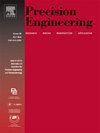Rapid generation of contour parallel toolpaths for 2.5D closed cavity based on accurate discrete medial axis transform
IF 3.5
2区 工程技术
Q2 ENGINEERING, MANUFACTURING
Precision Engineering-Journal of the International Societies for Precision Engineering and Nanotechnology
Pub Date : 2024-12-12
DOI:10.1016/j.precisioneng.2024.11.014
引用次数: 0
Abstract
Contour parallel toolpaths are the most common machining strategies for 2.5D features. To enhance the machining efficiency, different cutting paths for various tool combinations should be considered. However, existing algorithms have paid limited attention to multi-tool cutting, which is nevertheless an industrial practice in roughening and finishing. This paper proposes a rapid generation method for contour parallel toolpaths based on an accurate two-dimensional discrete medial-axis transform (MAT) for complex closed cavities. The accurate discrete MAT was refined using the Delaunay triangulation (DT) method. According to the definition of MAT, the calculated discrete medial axis (MA) points are adjusted to obtain accurate MA points by iterative method. The accurate discrete MAT obtained served as the basis for the toolpath generation. Contour parallel toolpaths can be rapidly generated by applying the discrete MAT and the proposed toolpath generation method. The resulting toolpaths have been validated to closely match the cutting path obtained through commercial software calculations, which require much higher computational efforts. The proposed method introduces a novel accurate discrete medial axis calculation method and enables the rapid computation of multi-tool combination cutting paths., which is more suitable in toolpath generation, cutting time prediction and toolset optimization in practice.
求助全文
约1分钟内获得全文
求助全文
来源期刊
CiteScore
7.40
自引率
5.60%
发文量
177
审稿时长
46 days
期刊介绍:
Precision Engineering - Journal of the International Societies for Precision Engineering and Nanotechnology is devoted to the multidisciplinary study and practice of high accuracy engineering, metrology, and manufacturing. The journal takes an integrated approach to all subjects related to research, design, manufacture, performance validation, and application of high precision machines, instruments, and components, including fundamental and applied research and development in manufacturing processes, fabrication technology, and advanced measurement science. The scope includes precision-engineered systems and supporting metrology over the full range of length scales, from atom-based nanotechnology and advanced lithographic technology to large-scale systems, including optical and radio telescopes and macrometrology.

 求助内容:
求助内容: 应助结果提醒方式:
应助结果提醒方式:


